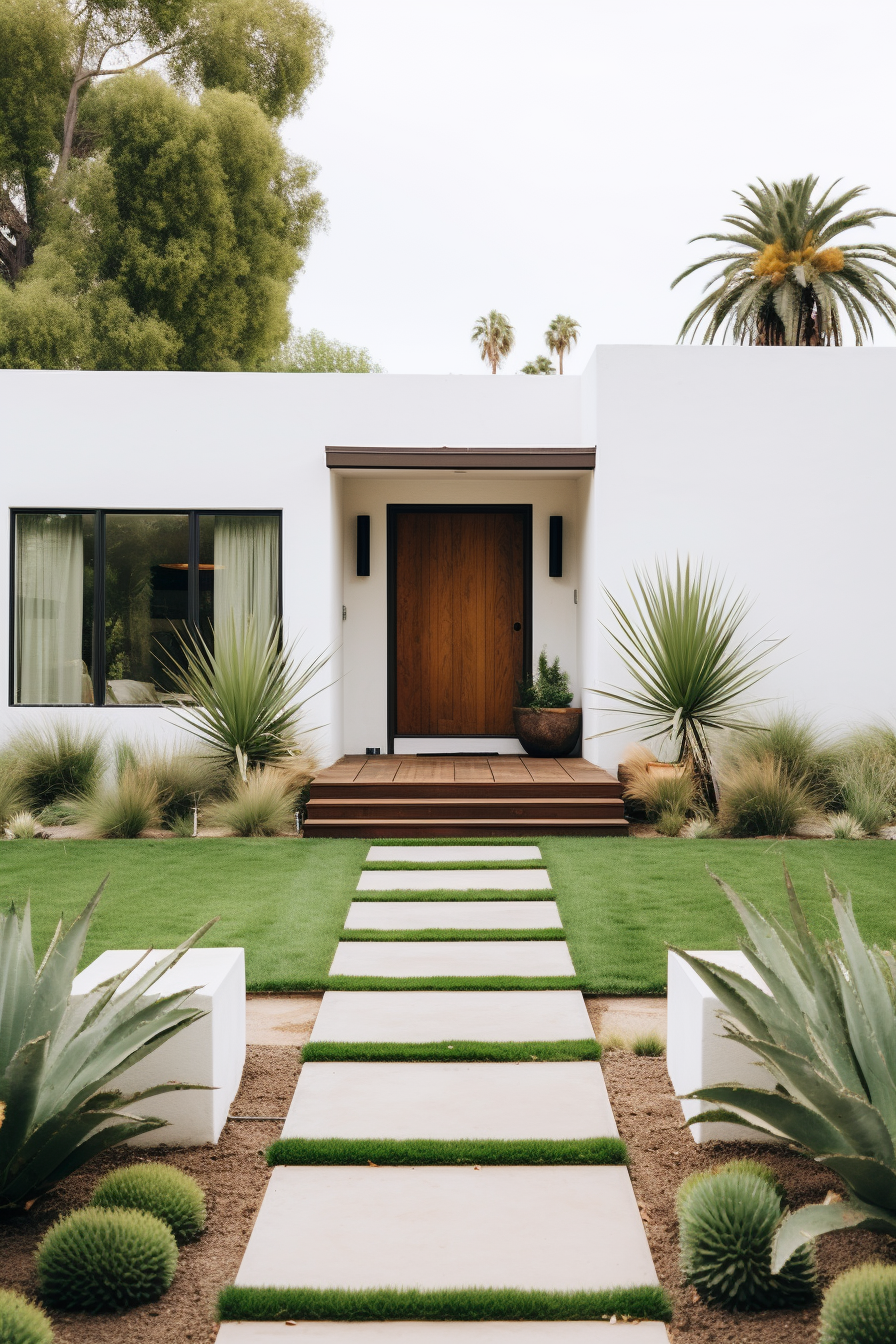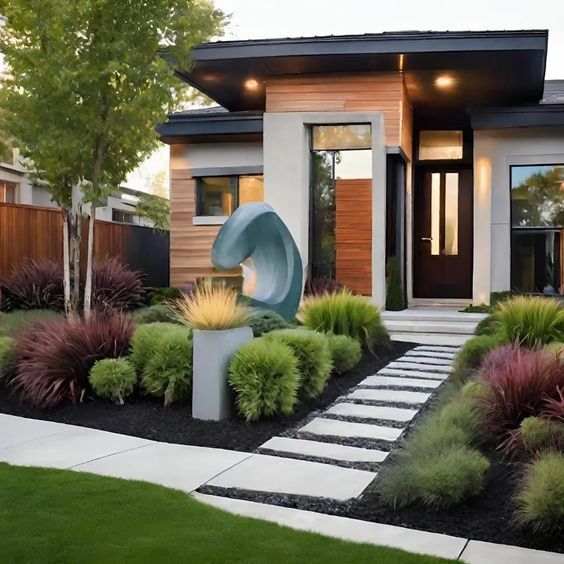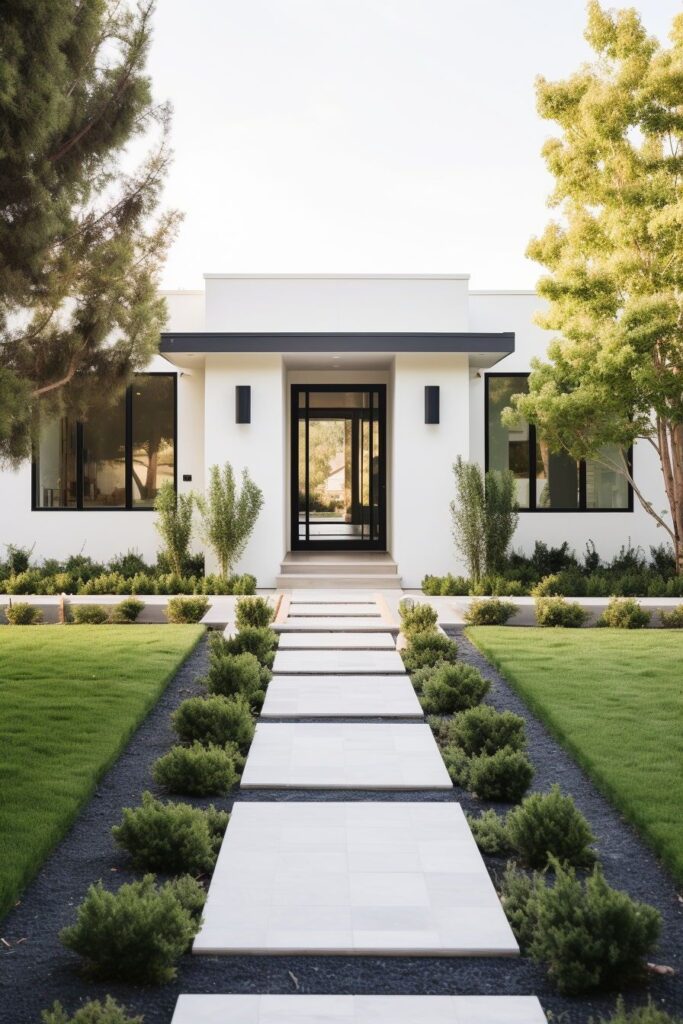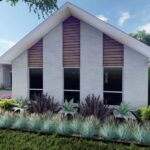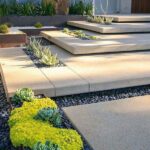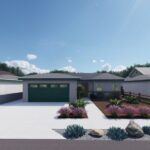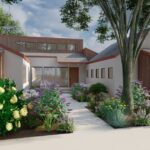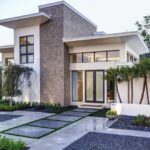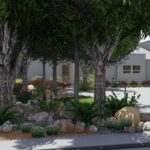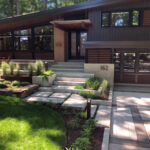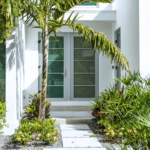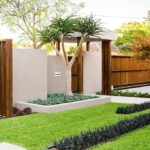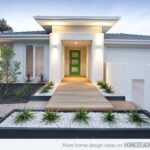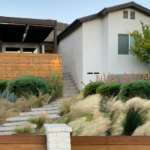Modern landscape design for the front yard has evolved to incorporate a range of elements that emphasize clean lines, minimalism, and sustainability. One key aspect of modern landscape design is the use of native plants and drought-resistant vegetation. By incorporating these types of plants, homeowners can reduce their water usage and create a more eco-friendly landscape that is low-maintenance.
In addition to using native plants, modern front yard designs often feature geometric shapes and patterns. This can be achieved through the use of hardscaping elements such as pavers, concrete slabs, or gravel pathways. These elements can help create a more structured and visually appealing front yard that complements the architecture of the home.
Another common feature of modern front yard designs is the use of outdoor living spaces. This can include seating areas, fire pits, or outdoor kitchens that allow homeowners to enjoy their front yard as an extension of their living space. By creating these outdoor spaces, homeowners can maximize their use of their front yard and create a more inviting and functional environment for both themselves and their guests.
Lighting also plays a crucial role in modern front yard design. By strategically placing outdoor lighting fixtures, homeowners can highlight key features of their front yard, such as trees, plants, or architectural elements. This can create a more visually appealing front yard that can be enjoyed both during the day and at night.
Modern front yard designs often incorporate sustainable practices, such as rainwater harvesting systems or permeable paving. These features can help reduce water runoff, prevent erosion, and create a more environmentally friendly landscape that also helps conserve water resources. By incorporating these sustainable practices into their front yard design, homeowners can create a more eco-friendly and low-maintenance landscape that is both visually appealing and functional.
Overall, modern landscape design for the front yard emphasizes clean lines, minimalism, sustainability, and functionality. By incorporating native plants, geometric shapes, outdoor living spaces, lighting, and sustainable practices, homeowners can create a front yard that is not only visually appealing but also environmentally friendly and low-maintenance. With these modern design elements, homeowners can transform their front yards into inviting and beautiful outdoor spaces that complement the architecture of their homes.
